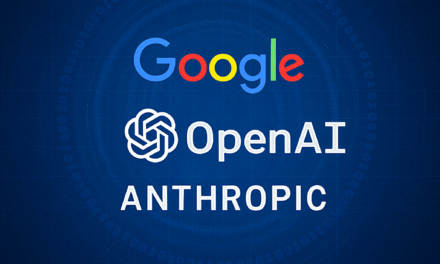What is Gemini 2.5 Pro and why does that deserve attention?
Generative artificial intelligence is experiencing rapid growth and transforming entire sectors, from health to finance, including creative industries. Within this dynamic, Google recently presented Gemini 2.5 ProA technical evolution that intends to face the main challenges of current language models. Why this tool awakens such interest? Because it is part of a context in which the reliability, performance and transparency of AI systems have become priority requirements for users and decision manufacturers.
An advance in the field of generative AI
Google has developed Gemini 2.5 Pro from lessons learned from its previous models and comments from users of several industrial and social applications. This new version has several notable improvements aimed at increasing reliability and limiting biases and generation errors:
Automatic validation of information before restitution.
Contextual adaptation of responses according to the expressed needs.
Optimization of speed and precision in the treatment of complex applications.
Why does generative AI constitute a strategic problem?
The generative AI now occupies a central place in many operational and decision -making processes. It intervenes in particular in automated content production, decision -making help in an uncertain environment and assistance in documentary and translation tasks.
According to statista (2024), the world market of AI should arrive 826.7 billion dollars by 20301.
In this context, models such as Gemini 2.5 Pro can help strengthen the quality of the content generated and limit the risk of errors, while optimizing the processing times and customization of the answers provided.
GENERATIVE CHALLENGES: How Google responds
For several years, automatic text generation models have faced the hallucinations problem. Gemini 2.5 Pro incorporates mechanisms to remedy it, in particular:
- Automated validation systems and real -time filtering.
- Collection protocols and comments analysis of users to adjust and improve the model continuously.
- A reinforced dynamic reasoning capacity, adjusting the depth and nature of the analysis depending on the context.
These devices aim to reduce biases, improve the quality of the responses and limit excessively complex reasoning.
An open future for generative AI: adaptive reasoning and scalability
Gemini 2.5 Pro marks an important step, but is part of an evolutionary trajectory. Researchers are committed to improving contextual reasoning capabilities, reducing algorithmic biases, the transparency of decision -making mechanisms, as well as the integration of ethical and regulatory standards, such as the European artificial intelligence law.
In the medium term, these advances should help structure a more reliable and ethical framework for artificial intelligence generative systems.
What perspectives of future generative applications of AI?
Gemini 2.5 PRO constitutes a significant milestone in the evolution of artificial intelligence generative systems. Its development illustrates the efforts made to face the technical, ethical and operational challenges raised by these technologies. However, the future of generative AI remains widely open.
The next advances will probably focus on improving adaptive reasoning capabilities, customization of responses according to application environments and the guarantee of transparency and systems safety.
References
1. Statita. (2024). Global market size 2020-2030. https://www.statista.com/statstics/941835/Worldwide-artificial-intelligence-market-revenues/
2. Google Deepmind. (2024). Advances in the reasoning of AI: Towards more reliable language models https://deepmind.google/discover/blog/advances-in-ai -rasoning/
3. Bommasani, R. et al. (2021). On the opportunities and risks of the fundamental models. Research Center on Foundations Models. https://crfm.stanford.edu/report.html
3. Bommasani, R. et al. (2021). On the opportunities and risks of the fundamental models. Research Center on Foundations Models. https://crfm.stanford.edu/report.html




